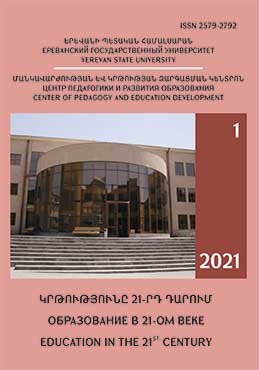ON DEFINING AN INCLUSIVE LEARNING ENVIRONMENT
DOI:
https://doi.org/10.46991/educ-21st-century.v1i5.10728Abstract
Introduction. Implementing inclusive education is a systemic innovation that covers major areas of educational organizations’ activities. This innovation is based on the current social policy of the state, it is legislated as the one providing equal access to education for all learners, taking into account the diversity of their special needs and unique capabilities. However, inclusive education development is characterized by a high degree of instability and uncertainty of its semantic, conceptual, and technological components. The concept of inclusion itself has not yet been thoroughly investigated as a constructive idea in Russian society, both at the level of theoretical understanding and at the level of professional self-awareness of practicing educators. It can be said that this concept is being explored through trial and error. This arises from the lack of theoretical and methodological basis, absence of a unified approach, strategy and model for implementing inclusive practices with due regard to the unique ways the Russian education system develops. It is critical to shape an inclusive approach which would give a scientific and theoretical basis for studying and modeling a learning environment. It is also necessary to formulate reasonable, experimentally verified guidelines and ways to organize inclusive practices in educational organizations.
The research problem. In scientific and methodological literature, inclusion is mostly presented as a philosophical idea, a strategy of social and education policy, a set of features that characterize the idea of inclusion, but not as a well-defined category of pedagogy. “As inclusion is interpreted in different ways, it is difficult to formulate a universal definition, this is why different and often contradictory ways of its practical implementation emerge.” [7, 1259]. In real life, all aspects of education are accumulated in the educational setting, and the changes are reflected there. Transforming learning environment in a way that would include children with special needs involves many aspects, some of which are discussed in the works by N. A. Myodova, L. E. Oltarzhevskaya, O. S. Panfyorova and others. However, the scientific definition of inclusive environment as an integral whole, a systematic object of study and a scheme to be implemented is yet to be provided.
Analysis of current research and publications related to the problem. The scientific sources show that inclusive education may be interpreted in a narrow way and broadly. In a narrow sense, inclusion is considered only as inclusion of children with special needs into the mainstream education process, with the necessary accessibility conditions provided (N. N. Malofeev, N. M. Nazarova, V. I. Lubovsky). In a broad sense, inclusive education is studied in the context of social justice, shared worldview, values of democracy and equal access to cultural legacy [8]. It is understood as developing a system of general education that overcomes labeling children according to their social status and abilities [1]; education with conditions that provide full participation, high-quality education and support for everyone [2]. We share the approach of L. Florian and N. Linklater who see inclusion as the development of alternative pedagogy which includes finding strategies to support each student in such a way that everyone can participate in community activities [5]. On the part of the teacher, this involves overcoming stereotypical attitudes towards children based on their abilities and giving flexible responses to situations of trust-based communication [4]. This can be achieved through implementing inclusive practices into learning environments and applying the main principles, requirements, and tactics that are necessary to let various groups of students participate in learning and social activities together.
The research purpose conducted within the framework of the article is to identify the key theoretical and methodological concepts of the inclusive approach to modeling the
132
environment of an educational organization and to formulate a definition of an inclusive learning environment on their basis.
The scientific novelty of the research lies in offering methodological guidelines for researching and modeling inclusion in an educational organization and defining an inclusive learning environment at two levels (the level of values and concepts and the operational level).
Downloads
Published
How to Cite
Issue
Section
License

This work is licensed under a Creative Commons Attribution-NonCommercial 4.0 International License.

